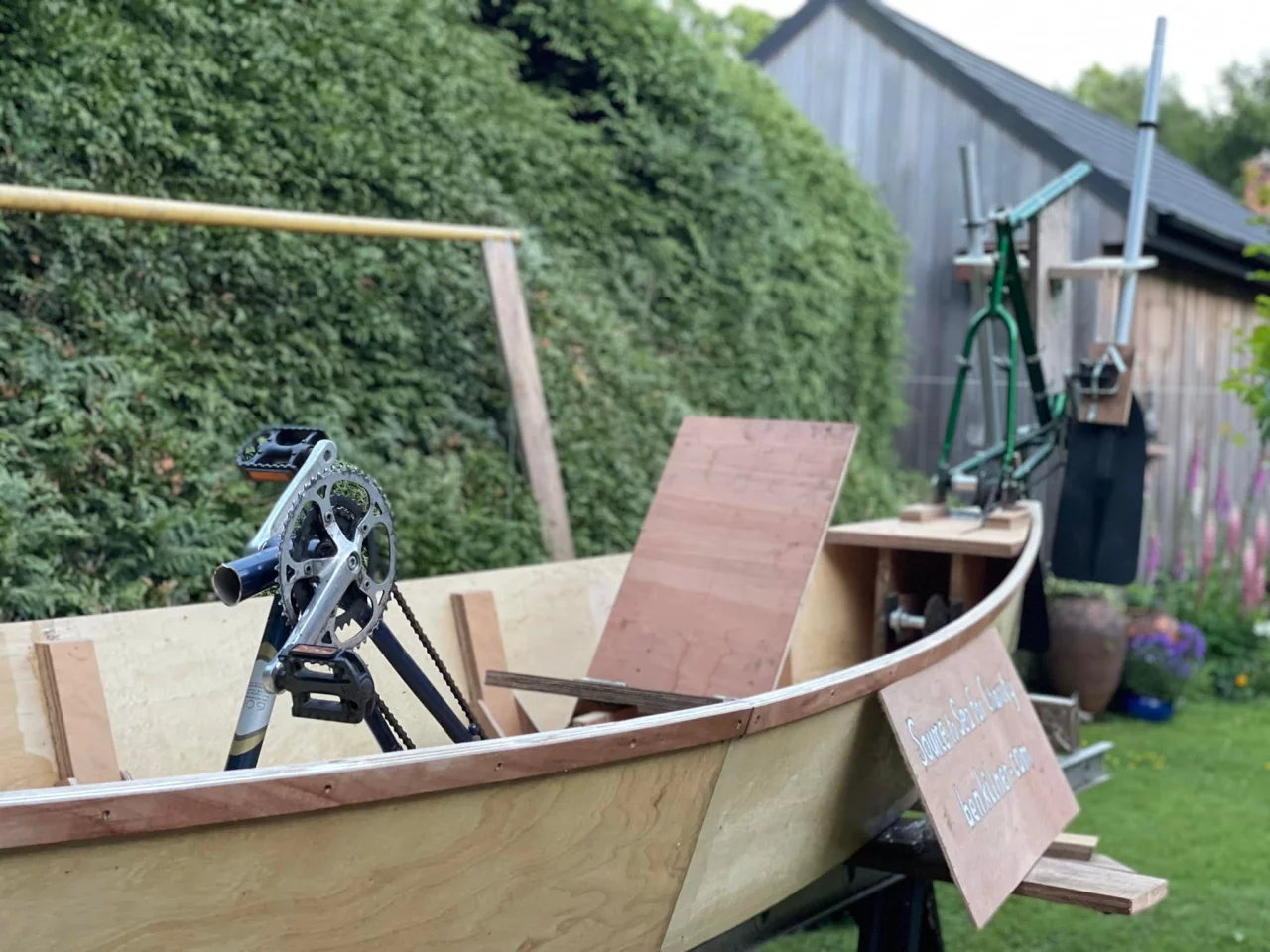Although pedal-powered boats do exist, most utilize either a propeller or flapping fins on their underside. Ben Kilner's one-off Jamima Paddleduck takes a different approach, with two rear paddles mounted on a partial bike frame – and the setup has some definite selling points.
Kilner is a British maker/entrepreneur, who holds a degree in mechanical engineering from University College London. He built the canoe-like watercraft over the course of just three days, from two sheets of 6-mm marine-grade plywood, two bicycles, epoxy resin, three paddles, plus "extra bits and bobs."
Currently, he's in the process of pedalling the boat from the navigable source of the River Thames to its outlet into the North Sea. He's doing so in order to raise money for The Lucy Rayner Foundation and StrongMen, both of which are organizations that provide support to people with mental health issues.

The boat's primary pedals are on one bike frame, mounted in front of the seat. A chain drive runs from that frame's crankset to the crankset of another frame in the back. It has a couple of aluminum-shaft/polymer-blade paddles mounted on its own set of pedals. Therefore, as Ben pedals in front, the paddles alternately move up and down through the water, in the back.
The third paddle is mounted to one side of the seat, and is used to steer in a tiller-like fashion.
"Circular pedal power at the feet is converted to chain tension like a normal bike. The chain tension is then converted to circular motion at the back pedals," he explained to us. "By attaching paddles to the rear pedals and constraining the shaft of the paddles in two degrees of freedom at a point, the tip of the paddle creates an amplified ellipse. The amplified ellipse provides a longer power stroke with more axial engagement with the water vs a pure circular stroke (eg: circular paddle wheel). It also has a cleaner and less splashy entry into the water due to the elliptical path."

Additionally, because the paddles don't reach down much further than the underside of the boat, they're less likely than a propeller to hit bottom in shallow water, or to get tangled in weeds. What's more, they're entering water that has already been smoothed out by the boat in front of them. And as an added bonus, they can be pedalled in reverse to back up, or for extra stopping power.
That said, Kilner does admit that a pedal-to-propeller system would probably be more efficient. He's also looking into adding a splashguard and altering the profile of the paddles, in order to reduce the splashing that does occur when the water is choppy. Ultimately, Ben and his project partners hope to commercialize the technology.
"Because a functional version of this system can be made from readily available bike parts, I can see it being used on lakes and rivers as a propulsion system in developing countries," he said. "We will aim to provide free plans and guidance for anyone who would like to make their own."

As far as the trip goes, Kilner had already traveled about 150 miles (241 km) from a point near the town of Crickdale to the Putney district of London. He's now adding extra floatation to the Jamima Paddleduck and arranging to be accompanied by a safety boat, which the Port of London authorities tell him will be required for the last leg of his journey, into the open sea. You can make a donation via his Crowdfunder page.
The drive mechanism can be seen in action, in this video.
Project page: Get Up Give Back 2022 - Mental Health Matters







